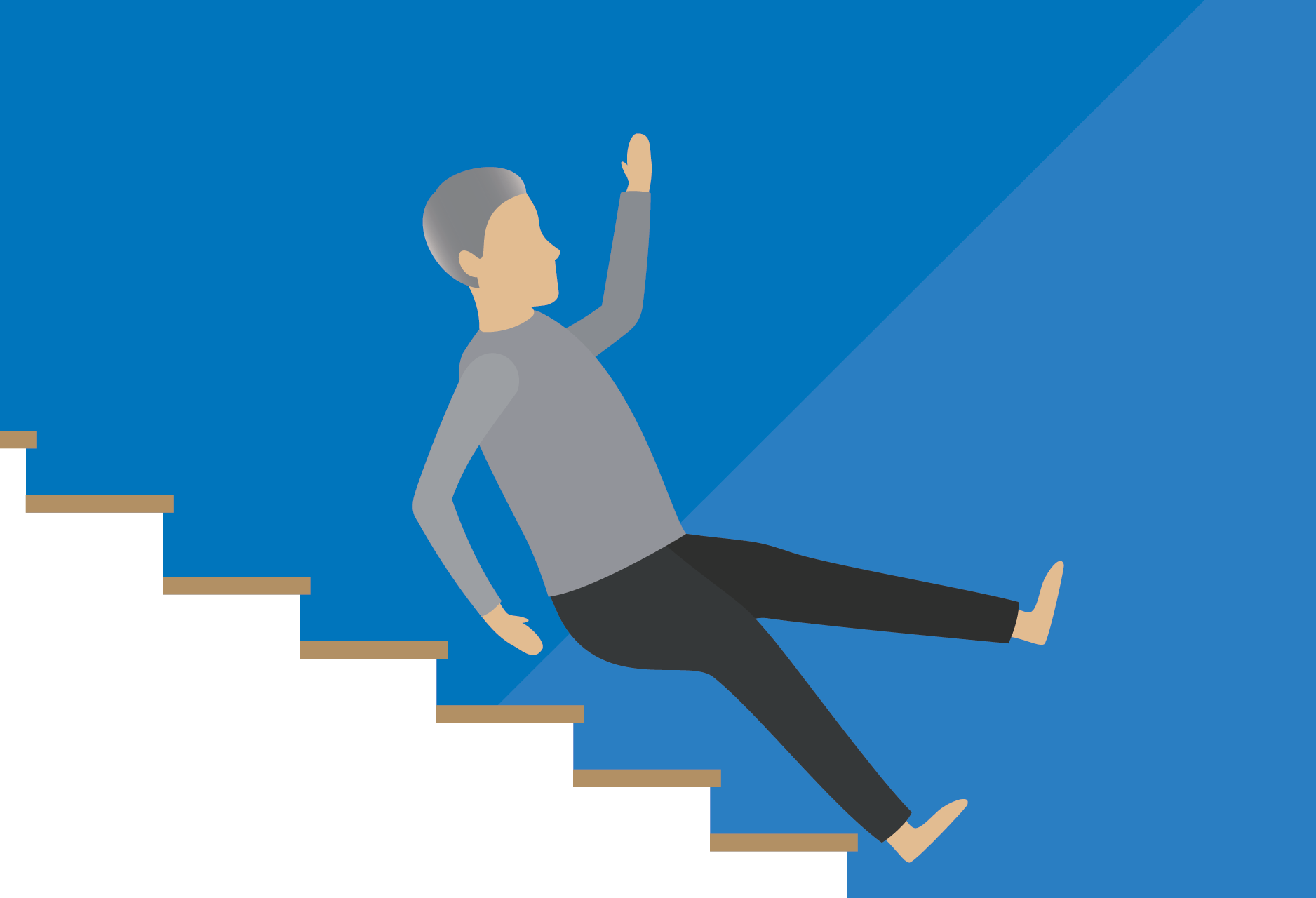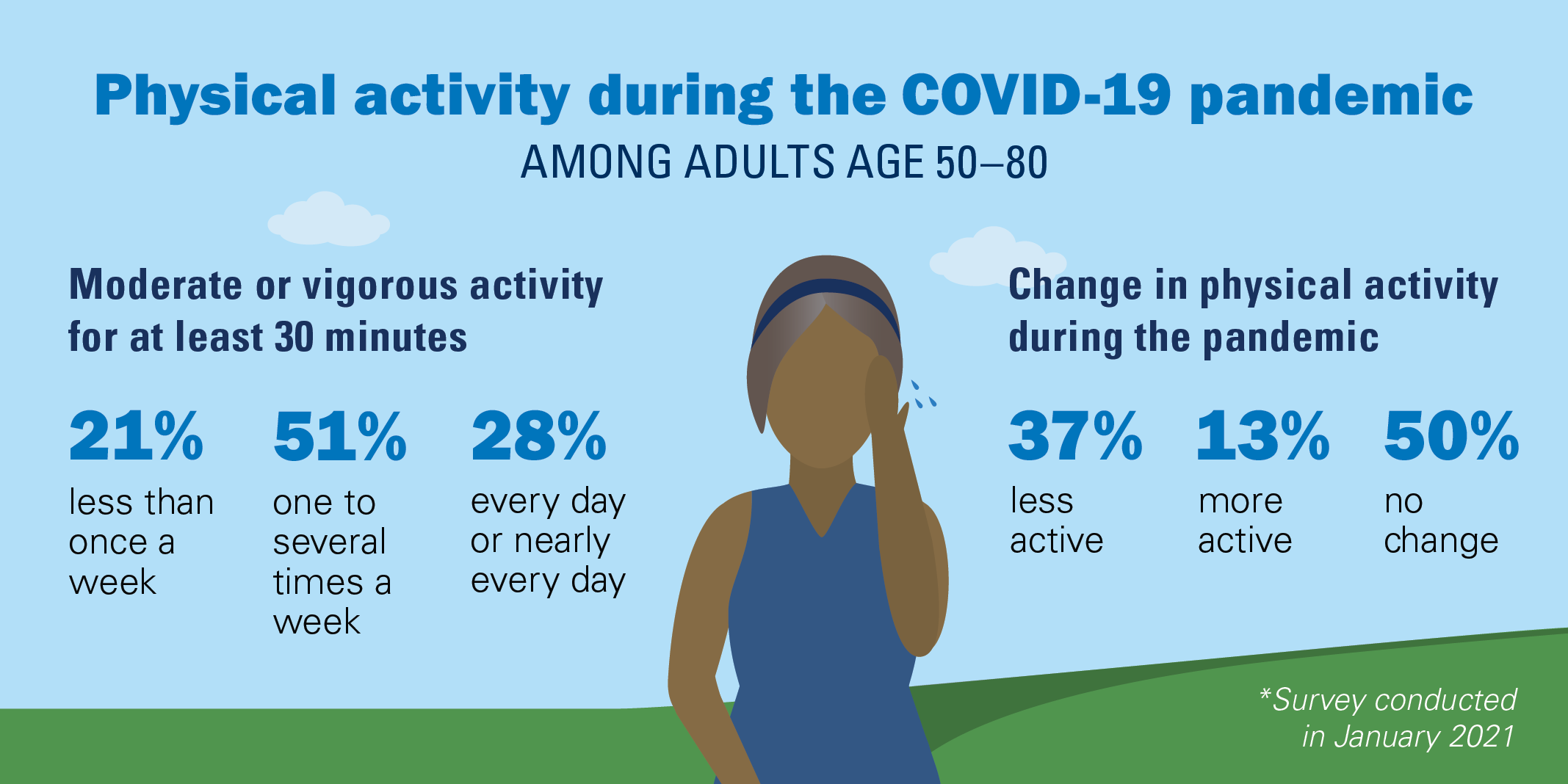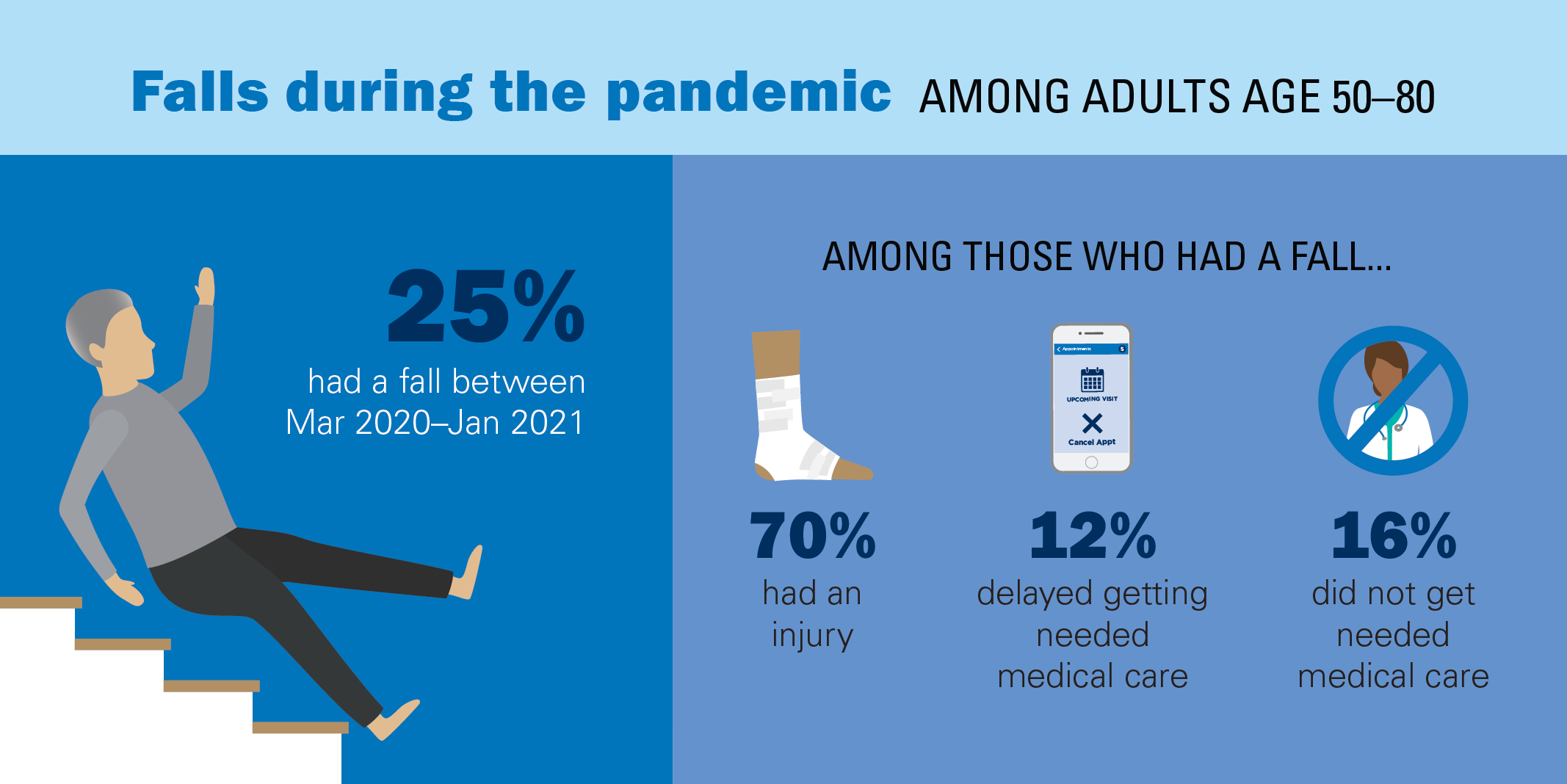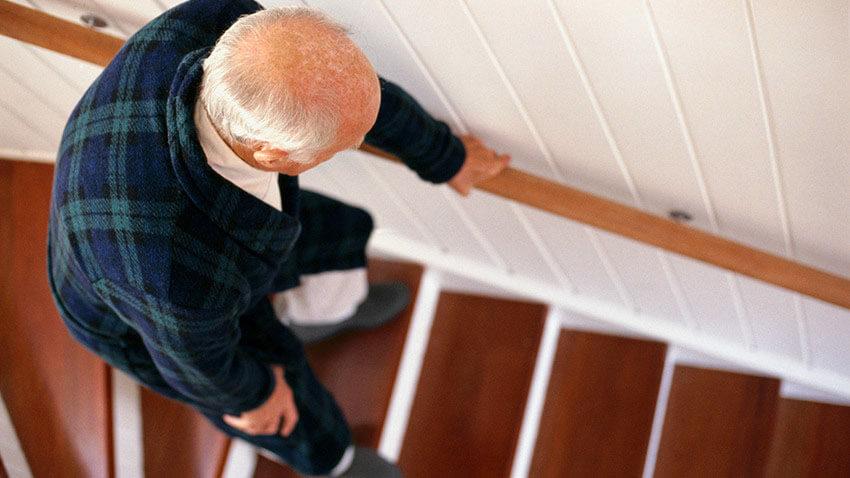
Declines in physical functioning (i.e., physical conditioning and mobility) are common among older adults and can increase the risk for falls. Falls can lead not only to serious injuries but also to problems with physical functioning. The COVID-19 pandemic may have contributed to changes in physical activity and physical functioning among older adults. In January 2021, the University of Michigan National Poll on Healthy Aging (NHPA) asked a national sample of adults age 50–80 about their physical functioning and falls since the pandemic’s start in March 2020.
Physical activity
Since March 2020, 28% of adults age 50–80 reported getting physical activity of at least moderate intensity (e.g., brisk walking, housework, or mowing the lawn) for at least 30 minutes nearly every day or every day, 51% one to several times a week, and 21% less than once a week.
More than one in three older adults (37%) said they were less active since March 2020, 13% were more active, and 50% had no change in their physical activity. In addition, 35% reported spending less time on their feet (i.e., standing or walking) on a typical day, 12% spent more time, and 53% had no change in time spent on their feet since the start of the pandemic.
Women were more likely than men to report being less physically active and spending less time on their feet. Black respondents were more likely to report being less physically active compared with Whites and Hispanics. Those who said they felt isolated or lacked companionship some of the time or often during the pandemic were more likely to be less physically active and spent less time on their feet than those who hardly ever felt isolated or lacked companionship.
Changes in physical conditioning and mobility
More than one in four adults age 50–80 (27%) reported that their physical conditioning (i.e., flexibility, muscle strength, endurance) had gotten worse since March 2020, 11% said it had improved, and 62% reported no change.
One in five older adults (21%) stated their mobility (i.e., ability to move around on one’s own by walking, using assistive devices such as a cane or walker, or by using transportation) had worsened, 10% said it had improved, and 69% reported no change in their mobility.
Worsened physical conditioning was more likely for those who reported doing less physical activity and/or spending less time on their feet compared with those who did not (50% vs 8%). Similarly, worsened mobility was more likely for those who reported doing less physical activity and/or spending less time on their feet compared with those who did not (37% vs 7%).
People who felt a lack of companionship and those who felt isolated were more likely to report that their physical conditioning and mobility had worsened.

Falls
One in four adults age 50–80 (25%) reported having at least one fall (ending up on the ground due to a loss of balance, slip, or trip) from March 2020 to January 2021. Of those who fell, 60% said they had fallen once, 32% had two or three falls, and 8% had four or more falls.
Falls were more common among women than men (28% vs 22%) and those who felt a lack of companionship compared with those who hardly ever lacked companionship (32% vs 21%). Falls were also more common among those who spent less time on their feet compared with those who experienced no change since March 2020 (28% vs 22%).
Most older adults who said they had at least one fall during the pandemic (70%) experienced an injury during one or more of their falls. The most common injuries reported after a fall were bruising (60%) and a cut or laceration requiring a bandage (22%).
Two in five older adults who had a fall (40%) reported needing some type of care after a fall. The most common types of care received for falls were care from family/friends (24%), primary care (12%), and emergency room care (11%).
Among older adults who experienced a fall since March 2020, 12% delayed care and 16% never received care they felt they needed. Among those who delayed or did not receive needed care after a fall, 40% indicated that the COVID-19 pandemic was the major reason for delaying or forgoing needed care.
More than one in three older adults (36%) reported being afraid of falling. Fear of falling was greater for those age 65–80 compared to age 50–64 (46% vs 29%) and for women compared with men (44% vs 27%).
Among those older adults who reported a fear of falling, 23% became more fearful of falling, 5% became less fearful, and 72% had no change in fear of falling since March 2020. Increased fear of falling was more likely for those who reported doing less physical activity compared to those doing more or those experiencing no change (32% vs 22% vs 14%). Increased fear of falling was also more likely for those with worsened compared with improved physical conditioning (42% vs 16%) and those with worsened compared with improved mobility (45% vs 21%).

Implications
A progressive decline in physical functioning leading to disability is common as people age. The results of this poll suggest that the COVID-19 pandemic was associated with rapid decreases in levels of physical activity among many adults age 50–80 that may have led to reduced physical conditioning and limited mobility.
Beyond these increased risks for disability, the pandemic also appears to have affected medical care for falls. Among older adults who experienced at least one fall from March 2020 to January 2021, more than one in four delayed or did not receive medical care they felt was necessary, often because of concerns related to the pandemic. Additionally, during the pandemic, one in four older adults who had a fear of falling became more fearful of falling, which is a strong predictor of avoiding activity and experiencing future falls.
This poll also identified groups at higher risk for reduced activity, worsened physical conditioning and mobility, and falls. These higher risk groups include women, Blacks, and older adults who are socially isolated. At particular risk were older adults doing less physical activity and/or spending less time on their feet, half of whom had worsened physical conditioning and 37% of whom had worsened mobility. Those at highest risk for becoming more fearful of falling were older adults who reported worsened conditioning and mobility.
These poll findings point to the importance of interventions to improve physical functioning and reduce fall risk for older adults. Interventions like physical exercise and in-home safety modifications have always been important for older adults but should be an even higher priority given the scope of declines in physical functioning during the pandemic. Such interventions may increase independence while reducing future disability, injury, and needs for medical care.
Use of technology, including telehealth visits, may help older adults who are isolated to connect to needed social and medical resources. Volunteerism and community and intergenerational programs as well as other opportunities for social engagement and physical activity may help reduce declines in physical functioning and falls.
Because loss of physical functioning and falls are leading factors for disability, findings from this poll can also help public health officials to understand the effect of the COVID-19 pandemic on older adults’ functional independence. Efforts to address the impact of the pandemic on physical activity, physical functioning, and falls among older adults will be critically important for years to come.
Data Source and Methods
This National Poll on Healthy Aging report presents findings from a nationally representative household survey conducted exclusively by Ipsos Public Affairs, LLC (“Ipsos”) for the University of Michigan’s Institute for Healthcare Policy and Innovation. National Poll on Healthy Aging surveys are conducted by recruiting from Ipsos KnowledgePanel®, the largest national, probability-based panel in the U.S.
This survey module was administered online in January 2021 to a randomly selected, stratified group of older adults age 50–80 (n=2,023). The sample was subsequently weighted to reflect population figures from the U.S. Census Bureau.
The completion rate was 78% among panel members contacted to participate. The margin of error is ±1 to 3 percentage points for questions asked of the full sample and higher among subgroups.
Findings from the National Poll on Healthy Aging do not represent the opinions of the University of Michigan. The University of Michigan reserves all rights over this material.
Citation
Hoffman G, Singer D, Solway E, Kirch M, Kullgren J, Malani P. Physical Functioning and Falls During the COVID-19 Pandemic. University of Michigan National Poll on Healthy Aging. August 2021. Available at: http://dx.doi.org/10.7302/1703
Scholarly Publication
Hoffman GJ, Malani PN, Solway E, et al. Changes in activity levels, physical functioning, and fall risk during the COVID-19 pandemic. J Am Geriatr Soc. 2021;1- 11. doi:10.1111/jgs.17477
